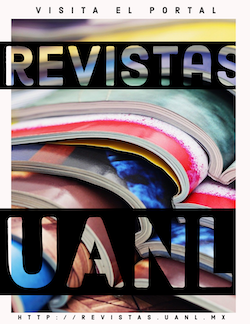PCAOB audits: Best audit strategies to comply with the regulatory framework of the PCAOB on internal control reviews
DOI:
https://doi.org/10.29105/rinn14.27-1Keywords:
Audit, audit strategies, internal control, PCAOB auditsAbstract
This article is regarding the regulatory framework of internal control applicable to public companies in the United States, and about which are the official requirements stablished by the authority, for the reviews performed by external auditors, in order to expose which are some audit strategies to apply to meet the regulatory framework and to streamline the work at audit firms, with the purpose of propitiate a significant positive impact on the time and resources invested in the audit.
Downloads
References
Beckstead, N. (2002). The Sarbanes-Oxley Act: Investors Protection through Corporate Governance. Brigham Young University, 18.
Brickey, K. F. (2003). From Enron to Worldcom and Beyond: Life and Crime After Sarbanes-Oxley. Washington University Law Review, 81(2), 357–401.
Brown, S. V. (2012). Specialization Through Client Commonality and Its Effect on Audit Production Cost. Fisher School of Accounting University of Florida, 49, 1–15.
Buzo, J. (2014). Punto de vista. 2014, año de trancisión al nuevo COSO 2013 PricewaterhoseCoopers,S.C. (PwC México), en www.pwc.com/mx
Chen, Y., Gul, F. A., Truong, C., & Veeraraghavan, M. (2016). Auditor client specific knowledge and internal control weakness: Some evidence on the role of auditor tenure and geographic distance. Journal of Contemporary Accounting and Economics,
(2), 121–140.
Committe of Sponsoring Organizations of the Treadway Commission. (2016). Committee of Sponsoring Organizations of the Treadway Commission: About us, en http://www.coso.org/aboutus.htm
Cortijo Gallego, Vi. (2007). Impacto de la Ley Sarbanes-Oxley en la regulación del sistema financiero español. Boletín ICE Económico, 2907, 43–51.
Díaz Morales, J. (2005). La Ley Sarbanes-Oxley y la auditoría. Partida Doble, 169, 104-109.
Felix, W. L., Gramling, A. A., & Maletta, M. J. (2001). The contribution of internal audit as a determinant of external audit fees and factors influencing this contribution. Journal of Accounting Research, 39(3), 513–534.
Felix, W. L., Gramling, A. A., & Maletta, M. J. (2005). The influence of nonaudit service revenues and client pressure on external auditor’s decisions to rely on internal audit. Contemporary Accounting Research, 22(1), 31–53.
Fornelli, C. M. (2015). The creation of the PCAOB: A watershed moment. The CPA Journal, 85(4), 6–8.
Glover, S. M., Prawitt, D. F., & Wood, D. A. (2008). Internal audit sourcing arrangement and the external auditor´s reliance decision. Contemporary Accounting Research, 83(2), 447–478.
Grundfest, J. A., & Bochner, S. E. (2007). Fixing 404. Michigan Law Review, 105 (8), 1643-1676.
International Federation of Accountants (IFAC) (2016). The International Auditing and Assurance Standards Board (IAASB), en https://www.iaasb.org/
Keller, V. (2006). Procedimientos analíticos de revisión. Comisión de Auditoría, Instituto Mexicano de Contadores Públicos, Boletín del Colegio de Contadores Públicos de México, 16(1), 1–4.
KPMG. (2014). Better understanding the process through flowcharting An implementation guide, KPMG Executive Education: Montvale, NJ.
Li, Y. (2010). The Case Analysis of the Scandal of Enron. International Journal of Business & Management, 5(10), 37–41.
C. Barrientos • F. Lozano
Malaescu, I., & Sutton, S. G. (2015). 1 The Reliance of External Auditors on Internal Audit’s Use of Continuous Audit. Journal of Information Systems, 29(1), 95–114.
Marín Calvo, H. A. (2013). Auditoría financiera, en http://www.gerencie.com/auditoriafinanciera.html
Mauro Vera, J. L. (2014). Preparándose para una auditoría integrada. Congreso Internacional sobre Gobierno, Riesgos, Auditoría y Seguridad de Información (CIGRAS).
Miralrios en Prezi, S. M. en. (2013). Pruebas de recorrido, en https://prezi.com/6xo4d4005u4o/pruebas-de-recorrido/
Munro, L., & Stewart, J. (2009). External auditor’s reliance on internal audit: the impact of sourcing arrangements and consulting activities. Griffith University, 52(3), 202–205.
Nagy, D. M. (2005). Playing peekaboo with constitutional law: The PCAOB and its public/private status. Notre Dame Law Review,80(3), 975–1071.
PCAOB. (2016a). PCAOB Auditing Standards, en https://pcaobus.org/Standards/Auditing/
Pages/ReorgStandards.aspx
PCAOB. (2016b). Public Company Accounting Oversight Board (PCAOB), en https://pcaobus.org/Pages/default.aspx
Premuroso, R. F., & Houmes, R. (2012). Financial statement risk assessment following the COSO framework. International Journal of Accounting & Information Management, 20(1), 26–48.
Reiter, S. A., & Williams, P. (2013). Sarbanes-Oxley and the Accounting Profession: Public Interest Implications. Open Journal of Accounting, 2(1), 8–15.
Senate and House of Representatives of the United States of America in Congress assembled. (2002). Sarbanes-Oxley Act of 2002. Public Law 107–204; 107th Congress, en http://www2.ed.gov/policy/elsec/leg/esea02/107-110.pdf
Sotomayor González, R. (2010). Procedimientos analíticos en las auditorías de estados financieros. Revista Contaduría Pública: Instituto Mexicano de Contadores Públicos, 1–5.
WebFinance Inc. (2016). What is Public Company? definition and meaning, en http://www.investorwords.com/3932/public_company.html
Downloads
Published
How to Cite
Issue
Section
License
Copyright (c) 2018 Innovaciones de Negocios

This work is licensed under a Creative Commons Attribution-NonCommercial-ShareAlike 4.0 International License.
The InnOvaciOnes de NegOciOs magazine is a free and open access electronic magazine of a scientific-academic nature and is a publication of the Autonomous University of Nuevo León, in which the authors retain their copyright and grant the magazine the exclusive right to first publication of the work. Third parties are allowed to use the published content, as long as the authorship of the work is acknowledged and the first publication in this journal is cited.
For more information, please contact the Research Secretary (FACPyA) of the Autonomous University of Nuevo León. Telephone: (81) 1340-4430. Email: revinnova@uanl.mx










